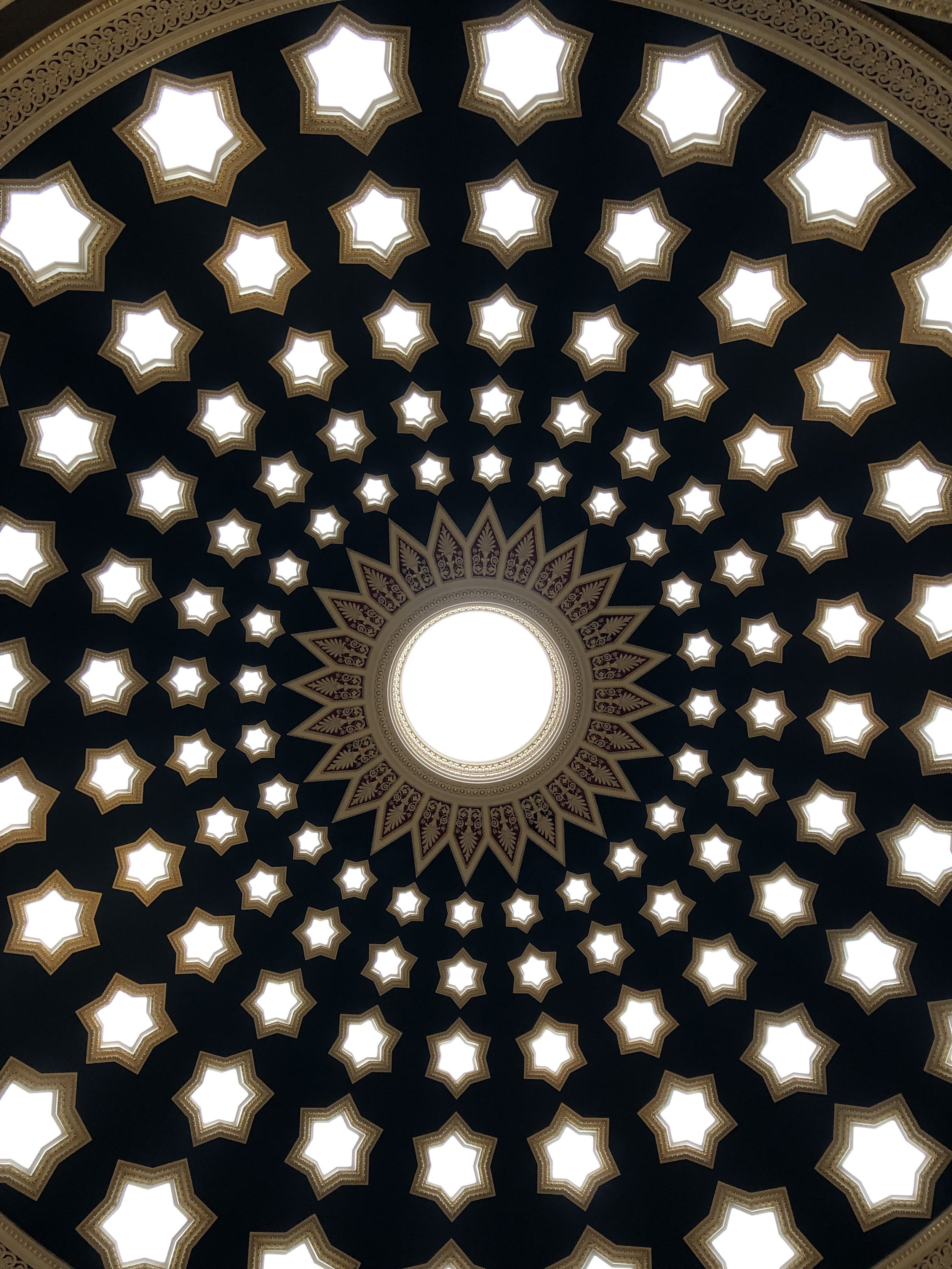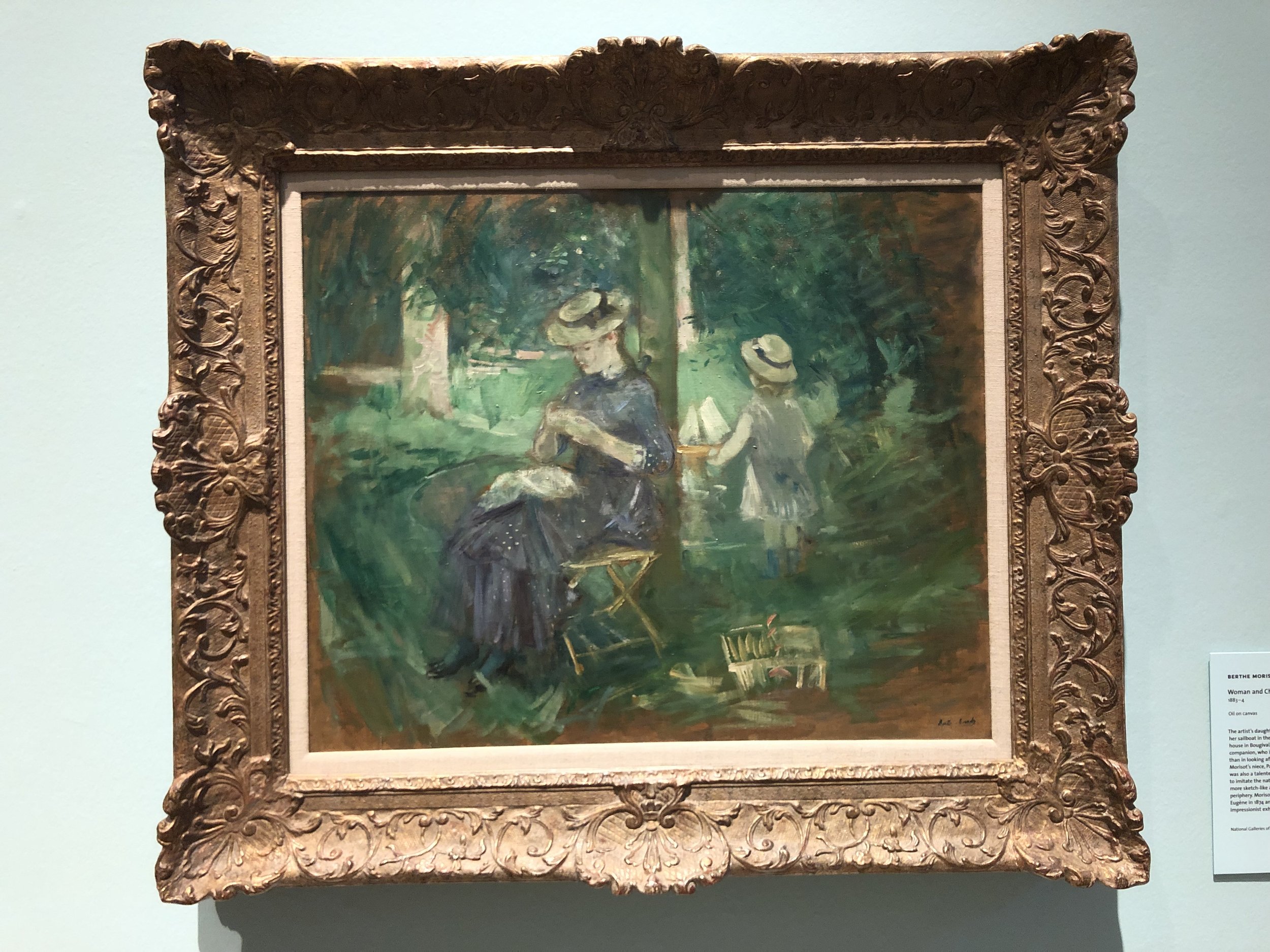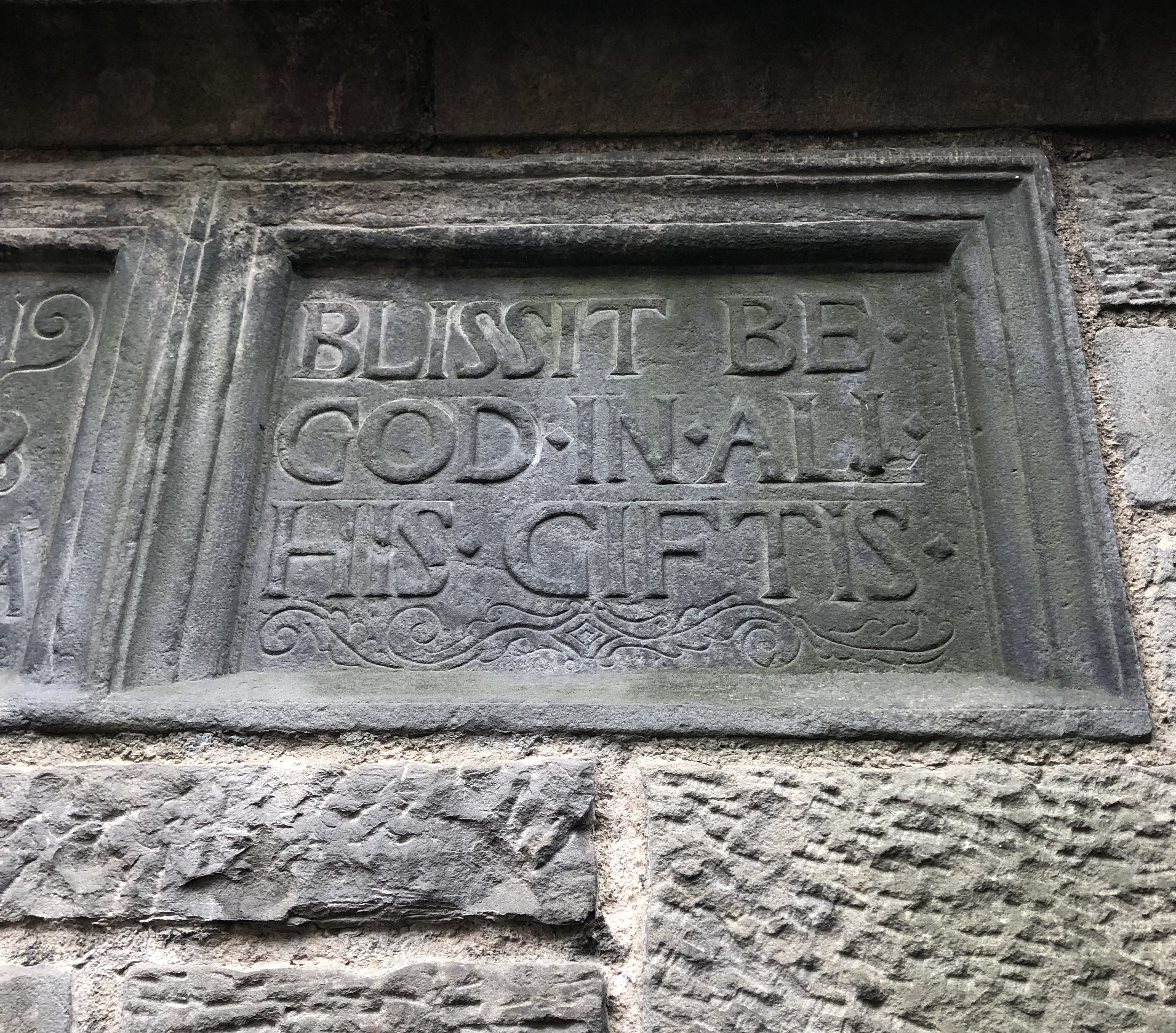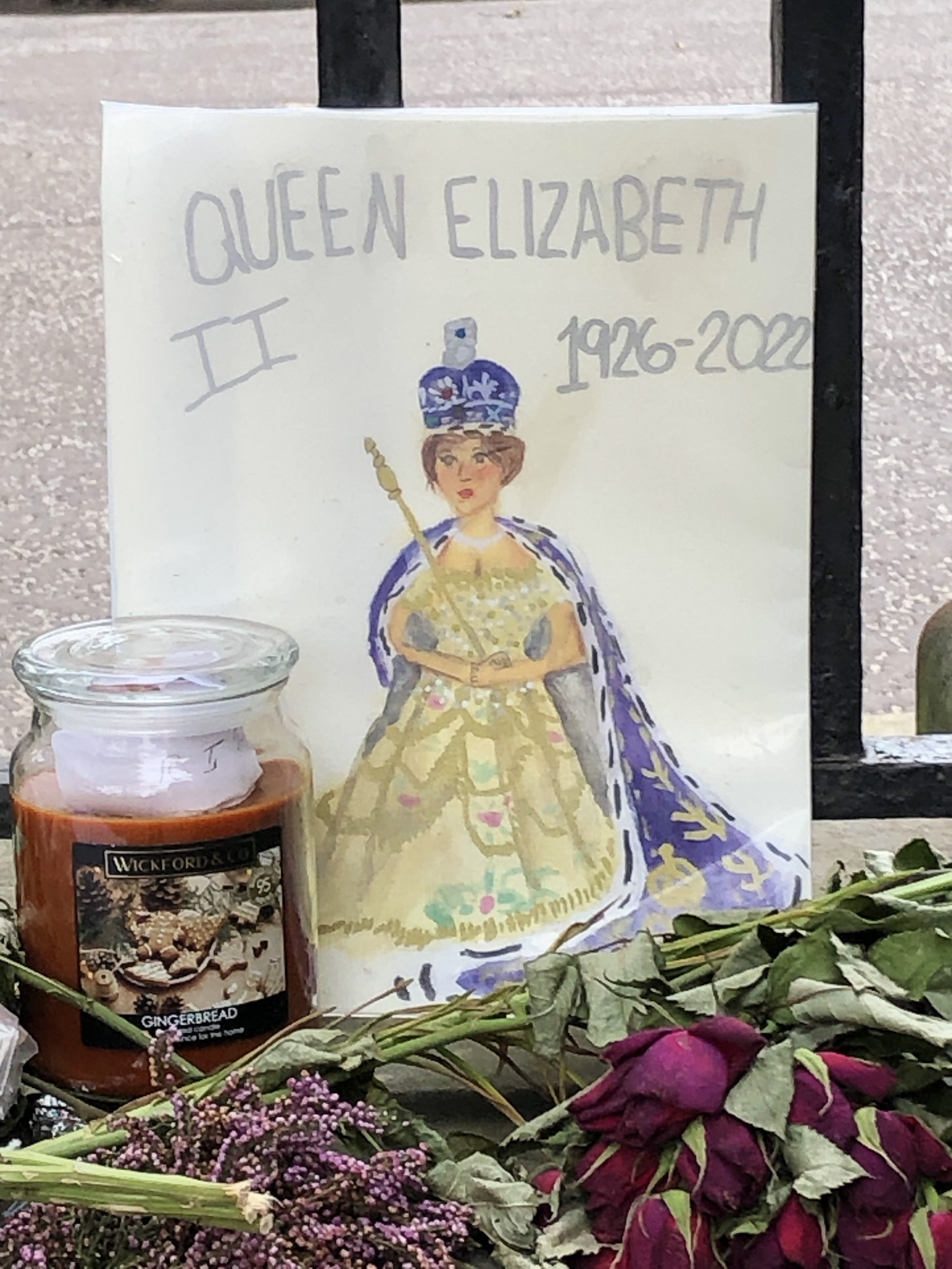Last week, I wrote about the walking tour my husband and I took through Edinburgh a few weeks ago. But I have so many photos and sites to share that I broke the post up into two parts. So here is part 2.
Before we went anywhere, we needed to exchange some currency and get some cash. Our tour guide, Jim, took us to a National Bank of Scotland branch close to our hotel. But it wasn’t any old local bank branch. Nope.
This one at 36 St. Andrew Square has been serving customers for nearly 200 years. The house itself is older than that, built by Sir Lawrence Dundas in the 1770s during the beginnings of Edinburgh’s New Town.
Gilt detailing everywhere in the lobby of 36 St Andrew Square. Just beyond it is the banking hall, which opened for the first time in 1861.
Yes, those stars in the ceiling are skylights, which allowed natural light to flood into the hall to help tellers see to count the money.
Cash in hand (or wallet), we stood gawking at the ceiling of the banking hall, taking pictures and pointing out details. A very friendly security guard filled us in on the history of the building and gave us a brochure with more information.
We walked into 36 St. Andrew Square looking for an ATM and got one of the best surprises of our time in Edinburgh.
Scottish National Gallery
Continuing our tour, Jim took us into the Scottish National Gallery to show us a handful of paintings that either typified Scottish life or underscored its history in some way. He also showed us where to go the next day for the ticketed exhibition, A Taste for Impressionism: Modern French Art from Millet to Matisse.
We were surprised to find that Scotland is home to one of the world’s greatest collections of Impressionist and Post-Impressionist Art, including a lost Van Gogh portrait. Here’s one of my favorite paintings by French artist Berthe Morisot, who boldly exhibited her work alongside her male Impressionist contemporaries, Her paintings often depicted domestic life and landscapes because, as a woman, that was the world in which she lived. I have always been drawn to her paintings like this one.
National Museum of Scotland
At the nearby National Museum of Scotland, we saw Dolly the Sheep (the first cloned mammal), the famous medieval Lewis Chess pieces, the Scottish History galleries, and the Millennium Clock Tower. After the clock stopped chiming, I ducked into the fashion and style gallery, where I catwalked through centuries of couture and creativity with fashion and different textiles. You can see some of them here.
National Library of Scotland
Our chosen place for lunch on the day of our tour was overflowing, so Jim took us around the corner to the National Library of Scotland, a major research library which specializes in all things Scotland. We went straight to the small café for soup, sandwiches, scones, and tea. And then the gift shop.
We also spent a few minutes in the gallery, with exhibits that show digitized versions of their world-class historical collections covering historical manuscripts, religious texts, art and design, kings and queens, and more. If only I had a large, fully-funded research project that required me to study in Edinburgh…(sigh)
One of several plaques at the John Knox Museum
White Horse Close
One of the advantages of having a tour guide is that they can show you important and interesting stops that you may not have otherwise known. For example, Jim took us into several narrow alleyways, or closes, which usually led into cobbled courtyards with apartments or other buildings clustered around it.
In White Horse Close, he showed us the site of a 17th-century travelers’ or coaching inn and pub called the White Horse Inn. It provided rooms and food for people traveling to and from London on stagecoach. It’s now an apartment building, which bears a plaque that says “1623.”
Just through that archway there is the Writers’ Museum.
The Writers’ Museum
Another close included a site that we particularly wanted to see. Lady Stair’s Close is famous for its literary associations. It contains Makars’ Court, which is made up of stones inscribed with quotes from some of the great names in Scottish literature. It also houses the Writers’ Museum, with memorabilia celebrating three writers who are especially close to Scottish hearts: Sir Walter Scott, Robert Louis Stevenson, and Robert Burns. We enjoyed our time with the exhibits about their lives and work. You don’t have to have read their work to enjoy the museum, and you’ll learn quite a bit about Scotland while you’re there.
Palace of Holyroodhouse
Our last official stop on the walking tour with Jim was at the end of the Royal Mile: the Palace at Holyroodhouse, the official royal residence in Scotland and the home of Royal Scottish history. It was late in the day when we arrived, and the palace was closed, given the recent death of the Queen.
We spent some time outside the entrance looking at the many floral tributes and gifts that had been left in memory of the Queen. Most of the flowers had already been cleared away, but many remained.
The flowers and gifts gave us a sense of how loved and respected the queen was by so many people around the world.
As we left the Palace, Jim took us across the street into an old cemetery where we climbed a steep hill. He showed us an Abraham Lincoln statue and a John Knox memorial, and then led us out the back entrance. There, he pointed to the view behind us: from Arthur’s Seat, an ancient volcano behind the Palace all the way to Edinburgh Castle, a mile away on the right.
The view showed us our progress of the day: from start (the Castle) to finish (the Palace).
Arthur’s Seat above. The Palace rooftop and turrets can be seen below left
Back at our hotel around 6:00, Mart and I dropped our bags and then dropped into chairs with a sigh. We were thirsty, footsore, and amazed at all we had seen and done. We talked about our favorite things and made a list of sites to revisit when we had more time. It was a packed and pretty-much-perfect day in Edinburgh, the first of many such days for us in Scotland.
Next week: Sites from the Scottish countryside
Be sure to subscribe by clicking the green button below so you don’t miss anything!
***
Here at Glimsen, I share glimpses of the beauty around us in nature, the arts, and the unexpected. If you like what you see, click the green button below to receive my posts and updates by email, and you'll also get a free gift of beauty in your inbox (see below). I look forward to connecting with you!















